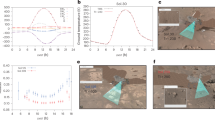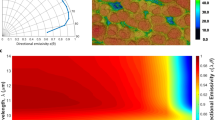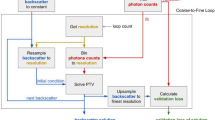Abstract
USING experimental pulsed ruby laser radars, numerous observations have been made hero of echoes from the ‘clear’ atmosphere. There is no doubt that these returns are caused by backscattering from particulate matter in the aerosol. Even in the clearest conditions echoes are invariably obtained from the immediate vicinity, and these are much enhanced in hazy conditions. Strong signals are commonly noted at heights corresponding to low-level inversions, revealing haze layers which are not discernible by eye.
This is a preview of subscription content, access via your institution
Access options
Subscribe to this journal
Receive 51 print issues and online access
$199.00 per year
only $3.90 per issue
Buy this article
- Purchase on SpringerLink
- Instant access to full article PDF
Prices may be subject to local taxes which are calculated during checkout
Similar content being viewed by others
Author information
Authors and Affiliations
Rights and permissions
About this article
Cite this article
COLLIS, R., LIGDA, M. Laser Radar Echoes from the Clear Atmosphere. Nature 203, 508 (1964). https://doi.org/10.1038/203508a0
Issue date:
DOI: https://doi.org/10.1038/203508a0
This article is cited by
-
COATS: Comprehensive observation on the atmospheric boundary layer three-dimensional structure during haze pollution in the North China Plain
Science China Earth Sciences (2023)
-
Research Progress on Estimation of the Atmospheric Boundary Layer Height
Journal of Meteorological Research (2020)
-
The Irradiation Effect of a Simultaneous Laser and Electron Dual-beam on Void Formation
Scientific Reports (2013)
-
Investigation of optical characteristics of aqueous media by the pulsed probing method
Journal of Applied Spectroscopy (1972)
-
Lidar, a laser radar for meteorological studies
Die Naturwissenschaften (1967)



